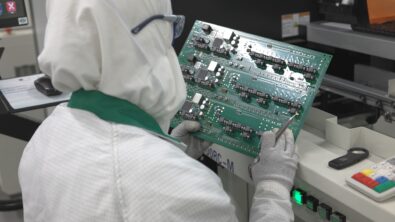Why You Should Care About On-Time Delivery and How APS Can Help

Why should you care about On-Time Delivery?
Over the years, when implementing manufacturing management solutions or supporting customers to achieve higher production performance, I have been asked numerous times about what the main performance indicators for a manufacturer would be. In the beginning, I used to first ask several questions to aid in understanding the client’s business, its production process, and its way of meeting the demand before giving any opinion. Well, I still do, but afterwards I now give a direct and short answer and drive the conversation from there: On Time Delivery (OTD).
Why?
It doesn’t matter the size of the enterprise, if the production is oriented to make to order, make to stock, assembly to order, or engineering to order; if it is continuous flow, mass production, batch production, cell production, craft production, job shop or something in-between; On Time Delivery is a nice summation of manufacturing performance. Issues with production, supply and quality can wreak havoc on a production schedule. Whether you are on time or late, the on-time delivery metric reflects what’s going right and what’s not.
However, this number is only an indicator, not the objective. The objective is the processes that lead to a good result for this performance indicator.
Reasons for late deliveries can be endless. Unforeseen events occur in the daily life of any manufacturing company. However, at the end of the day, the ability and quality of fast reaction is what will influence the OTD performance.
A machine breakdown is a problem, no doubt. But if you know that it will be fixed in the next couple of hours then you can start evaluating alternatives to mitigate the consequences. If your supplier warns you in advance that a delivery will be delayed by a few hours or days, you have some chance to evaluate production scenarios to overcome or reduce the impact in your production, which means in your revenue and margins. Suppliers will tell you in advance if you keep constant, honest and open conversation with them, but it is a subject for other time.
Bad forecasts are a reality in many companies. First, any sales forecast contains a margin of error. This is part of any statistical model that is adopted. The introduction of the Sales & Operation Planning process is helping companies to reduce the error, but in my experience, 100% accuracy is almost impossible.
Back to the margin of error and its size; the smaller the margin of error is, the better the production response will be. This is neither a big deal for the production planning and scheduling department or the other departments. Things tend to go smooth.
But if there is a large margin of error, things change a lot and the role of the production planning and scheduling department takes on a different role. The pressure from the entire organization is on their shoulders – I am not joking.
This department is responsible to balance capacity and demand. This means being able to generate production scenarios with the various possibilities of sales forecast. For example, proposing a plan that is consistent with the availability of equipment, tools, labor and arrival of materials. They then need to communicate this well to the other departments and, together, agree on which way to take.
The question, now, is how the production planning and scheduling department usually responds to those cases. What tools do they have available to support their process (and consequently respond fast) and with the best answer to the entire organization?
The most common answer is ERP. First, and just as a reminder, it is a transaction system with the role to keep records of everything that matters to the business. Then, MRP is mentioned. “Excellent”, I usually say. But does it suggest production or purchase requirements based on the real load of your facility? The answer is a big “NO”.
Many companies have tried Lean Manufacturing initiatives, and in my opinion, that is on the right path. Eliminating waste is a big deal and very important to keep companies competitive nowadays. However, Lean Manufacturing initiatives have limitations, especially to deal with situations of high variability on the demand or low volume-high mix of products that dispute same resources.
In my experience, most companies try to solve the production planning and scheduling by downloading the data available in spreadsheets. They then start to manipulate this data adding their knowledge about the production constraints to generate a master plan or a detailed scheduling.
Spreadsheets would be enough if unforeseen events never happened. But then they wouldn´t be called unforeseen events. The idiom “the devil is in the detail” couldn´t be more appropriate. In case of needing to change the master plan or detailed scheduling, the spreadsheets do not provide the speed companies urge to respond to any kind of issue.
What is missing then? My answer is Advanced Planning and Scheduling (APS) software which is, by definition, based on finite capacity. This type of technology can generate master plans or detailed scheduling in few minutes, with high level of precision (when routing data is refined enough and the constrains set up accordingly). Because it is fast, multiples production scenarios can be generated, compared and decision become easier to be taken by all departments impacted by the problem.
The introduction of an APS, of course, requires revisiting part of business process and positioning it between existing systems that can provide the best results for the company. It is not an overnight task, but it is not as complicated as many people think. One important note, however, the scheduling model should drive the integration with other software. Not the contrary.
Most data in any existing system will be good for an APS system to produce feasible production scheduling, however, special attention must be dedicated to product routings or bill of process. This set of data is usually entered in the major system to provide evaluations between standard and real cost, or instruction to operators on shop floor. It usually lacks details for fine scheduling.
Rarely details like complex setup times or changeover times are present in existing system. They are key to generating feasible scheduling aiming to minimize setup time, for example, from dark to light, or from allergen to non-allergen. Other key data for a production scheduling is interactions between multiple constraints at same time.
To illustrate this, I use this example: let´s say you have 5 machines that work one shift a day. Let´s say 40 hours a day is your capacity. For each machine you must have one operator. But then if you have 3 operators per shift, then your capacity is reduced. From 40 hours a day to 24 hours. Now, let´s say that the all demand you have for the next 4 weeks is for a product with 3 color variation but for this product you only have one mold. What is your real capacity to meet this demand? The answer is 8 hours a day. So, from 40 hours a day you end up with only 8 hours of capacity because the combination of attributes or variables at a point defines the real availability of resources.
With production planning and production scheduling software like Opcenter APS from Siemens Industry Software and part of its Manufacturing Operations Management (MOM), companies gain the ability to create plans and schedules in seconds or minutes, allowing frequent reschedule to address production changes and deviation and quickly detect problems. This is key for most businesses today because as earlier you can evaluate cause and effects as better decision can be taken.
Opcenter APS has being used by many companies around the world, from small to large enterprises. Benefits goes beyond improvement on OTD metric. Customers have reported increase in productivity, decrease in lead-time, reduction on stocks and WIP and, more importantly, improvement in communication between departments and reduction on stress. These last two are intangible benefits, but responsible to improve life quality of all people involved on the process. For me, this the base to excel overall performance in a dynamic world of manufacturing.


